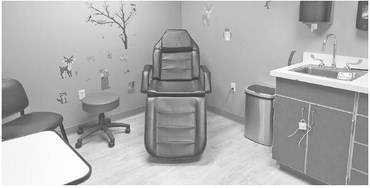Marathon to ask residents about water fluoridation
By Kevin O’Brien
Marathon City has not been fluorinating its drinking water since last fall due to difficulties with dissolving fluoride treatment tablets, and utility commissioners are starting to wonder if residents are OK with it staying that way.
On their next quarterly water bills, village residents will see a link to a survey on the village’s website, which will be used to collect input on whether to continue fluorinating the local water supply.
At the commission’s last monthly meeting on March 27, utilities superintendent Ken Bloom said the village has informed residents through its website that it is currently unable to fluoridate its drinking water because the treatment system is “not functioning properly.”
“If concerned, please look into using a toothpaste with fluoride or adding a fluoride supplement to help prevent tooth decay,” says the Feb. 25 message on the village’s website.
In May of 2022, the commission agreed to be part of pilot study, paid for by the Wisconsin Department of Health Services (DHS), to switch to water-soluble tablets for fluoridating the village’s water. This replaced the practice of adding fluorosilicic acid to the water, which was considered potentially dangerous due to the possibility of the acid accidently spilling and mixing with chlorine, which was stored in the same building.
Even though the state paid to install a $15,000 platform and feeder system (made by KC Industries in Florida) at the water plant for distributing the tablets, the utility has had to spend a lot of its own money to try and make the system work as intended.
Village administrator Steve Cherek said the village is still having problems getting DNR approval for a heat exchanger that will help dissolve the tablets steadily over time, maintaining a consistent level of fluoride in the drinking water. The village has been working with engineers at Strand Associates to get a heating system that will work.
“We’re forking out the engineering fees, and right now, we have close to $60,000 spent on the whole system,” he said.
Commissioner Bruce Bohr said the manufacturer of the tablet feeder system should really be covering the expense of getting its technology to work, instead of forcing the village to solve the problem on its own.
“I’m just very disappointed that the manufacturer hasn’t shouldered any of the load here,” he said.
Cherek said he’s been in contact with the manufacturer, but he’s still waiting on a response.
Even if the DNR were to approve a heat exchanger that was deemed safe for using on drinking water, Bloom said it might not create a steady concentration of fluoride in the water.
“Even if we do get the water up to a certain temperature, there may be other factors that could be causing this,” he said.
Cherek said the village is basically stuck with a system that doesn’t work, and it may need to spend thousands more just to get a heat exchanger approved and installed.
“I feel we’re almost to a point where we need to make a decision,” he said. “If we decide not to move forward with the existing system, are we going to bring the old system back up and running or are we not going to treat water altogether with fluoride?”
If the village were to switch back to adding fluorosilicic acid to the water, Bloom said it would likely have to build a new storage area for the chemical to keep it separate from the chlorine also used to treat water. He noted that the DNR does not require water to be fluoridated.
Before switching to the fluoride tablet system in 2022, the village took public input on the issue of water fluoridation. Local dentist, Dr. Noelle Marks, advocated for continuing fluoridation, and commissioners also reviewed materials from antifluoride group, the Fluoride Action Network, before deciding to proceed with the pilot program.




